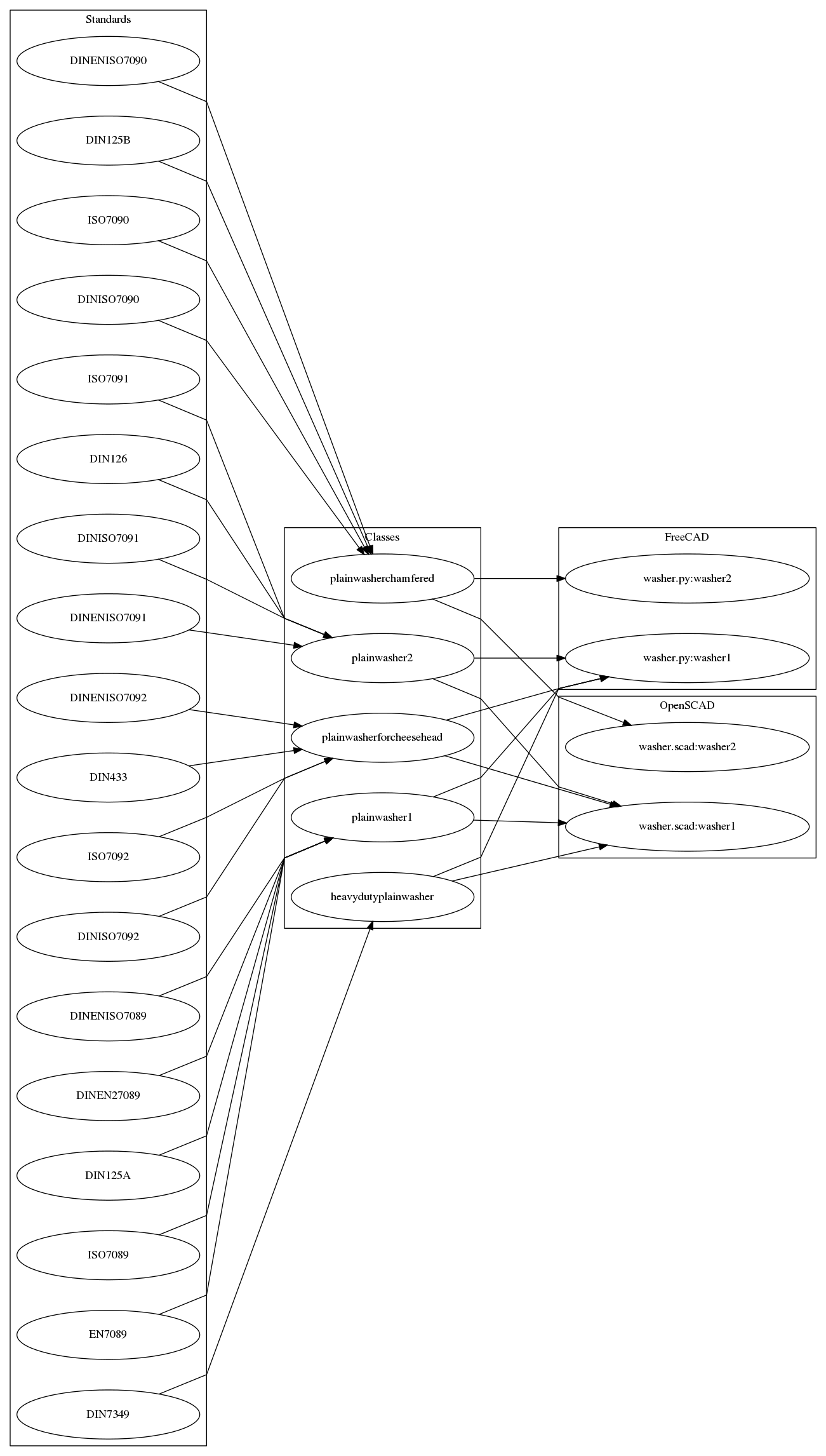A short introduction to BOLTS
The aim of BOLTS is to build a free and open-source standard parts library that is not tied to a specific CAD applications. For this reason all the data necessary to make the parts available is structured in a certain way: There is backend independent data and backend specific data, where backend refers to the different CAD applications (for now FreeCAD and OpenSCAD). By making this separation, if a part is available in one CAD application, the only thing that is required to make it available in another one is to add the necessary backend specific data.
Backend independent data
Very often there exist several similar or even identical standards for one part, issued by different organisations. For this reason, BOLTS has the concept of a class of parts, where one class can cover several identical standards. To specify a class of parts, we have to specify information about the various dimensions of the part, tables with values for these dimensions, a description, the standards that this class covers, a drawing of the part and so on. The way in which the geometry of the part is specified is different for different CAD applications and therefore belongs to the backend specific data.
BOLTS provides another level of organisation, the collection. A collection contains several classes, so that similar but not identical classes can be grouped together. All the information about the classes in a collection is stored in a blt file.
Backend specific data
There is also data required to create a 3D representation of a part in a CAD tool. For OpenSCAD we use a module definition in a scad file or a stl file, for FreeCAD a python function or a fcstd file containing the model. These are also called base modules, base functions or base fcstd files, or base geometries when referring to any of them. Together with a base file containing metadata this forms the backend specific data.
Synergy
Very often several classes can share the base geometry. For example BOLTS nows about 18 different standards for washers. These are covered by 5 different classes, which only need 2 different base geometries.
A picture says more than thousand words. The two boxes on the left (Standards and Classes) are backend independent. The backend specific part is just 2 base geometries for each applications:
Summary
To summarize again:
- The data in BOLTS is either backend independent or backend specific.
- A class covers zero or more standards, a collection contains one or more classes
- For a class to be usable in an application, BOLTS must have a suitable base geometry for that class.
